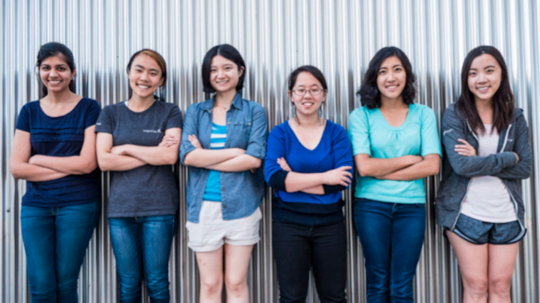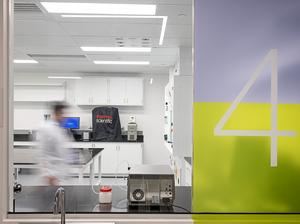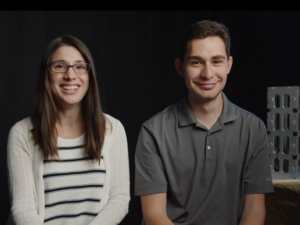
It may be true that women “hold a disproportionately low share of STEM undergraduate degrees, particularly in engineering,” according to a 2011 report by the U.S. Department of Commerce. However, this team of women engineers is an example of the results that women in STEM can achieve.
Chandani Doshi, Jessica (Jialin) Shi, Chen (Bonnie) Wang, Charlene Xia, Tania Yu, and Grace Li are all seniors at MIT studying different types of engineering, from electrical to mechanical. And yes, they’re all women. Their team just won a $10,000 prize for developing Tactile, a device that translates printed text into braille.
Braille is the raised-dot language that allows people with vision impairments to read via touch. The team started developing the idea and the first prototype in February 2016, while preparing for a hackathon at MIT. The night before the event the team came across a braille watch, which enables a new technology that is able to convert the digital time into braille.
“We thought that it was a very cool idea, and so we thought about ways to generalize the technology,” Jessica (Jialin) Shi, 21, a senior studying mechanical engineering and a member of Team Tactile, said in an interview with BostInno. “And that’s when we came up with the idea: What if we could convert text to braille immediately?”
Jessica pointed out that one of the team members, Chandani, had volunteered at a school for visually impaired students in India, and she witnessed how the people there had a hard time accessing information.
“She really motivated the social impact,” Jessica said.
From that time on, the team has developed different prototypes. Currently, the device they’re working on is Prototype Number Five. The technology for Tactile is currently patent pending, Jessica said.
Tactile works similarly to a smartphone camera. To translate the text, users take a picture of the page they want to read. Afterward, Tactile will be displaying the braille translation on its refreshable surface.
“If there’s a lot of text on the page, our device will refresh the letters, so you can read at your own pace,” Jessica said.
The current Tactile prototype is 2 inches by 9 inches, with a height of about 3 inches. “So it’s quite large, it’s not yet portable,” Jessica said.
As for a potential business plan for the company, Jessica said they’re not sure yet whether they’re going to go the nonprofit route or the for-profit route. “We hope we can manufacture our device for around $100, so the retail value will be around a couple hundred dollars,” Jessica said.
Team Tactile is one of the winners of the 2017 Lemelson-MIT Student prize, an annual competition for new inventions made by a single graduate student or a team of undergraduate students from any college or university in the U.S. As a group of six members, Team Tactile won the first prize as an all-women team in the category “Use It!,” which accepts applications for technology-based products that potential customers can use in their everyday life.
“Once we graduate, we’re going to work full time on [Tactile],” Jessica said.
Credits for the team photo: Brian Smale, Microsoft








